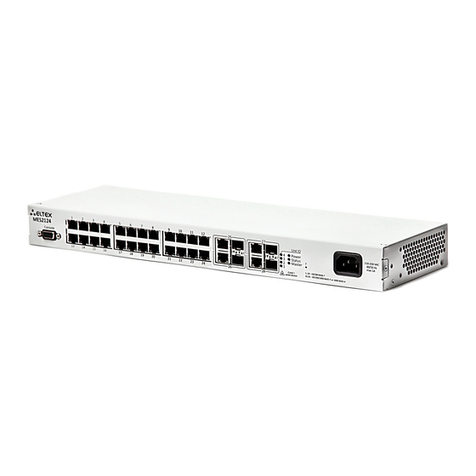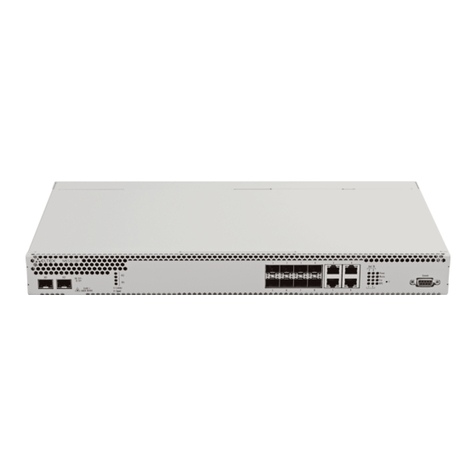MES53xx, MES33xx, MES23xx Ethernet Switch Series 4
5.10 Selective Q-in-Q ................................................................................................................................ 71
5.11 Broadcast Storm Control .................................................................................................................. 72
5.12 Link Aggregation Groups (LAG)......................................................................................................... 73
5.12.1 Static link aggregation groups.............................................................................................. 74
5.12.2 LACP link aggregation protocol............................................................................................ 75
5.13 IPv4 addressing configuration .......................................................................................................... 76
5.14 Green Ethernet configuration........................................................................................................... 77
5.15 IPv6 addressing configuration .......................................................................................................... 79
5.15.1 IPv6 protocol........................................................................................................................ 79
5.16 Protocol configuration...................................................................................................................... 82
5.16.1 DNS configuration................................................................................................................ 82
5.16.2 ARP configuration ................................................................................................................ 83
5.16.3 GVRP configuration.............................................................................................................. 84
5.16.4 Loopback detection mechanism.......................................................................................... 85
5.16.5 STP family (STP, RSTP, MSTP) .............................................................................................. 86
5.16.6 G.8032v2 (ERPS) protocol configuration ............................................................................. 92
5.16.7 LLDP configuration............................................................................................................... 94
5.16.8 OAM protocol configuration................................................................................................ 99
7.1 Voice VLAN...................................................................................................................................... 102
7.2 Multicast addressing....................................................................................................................... 103
7.2.1 Multicast addressing rules .................................................................................................... 103
7.2.2 IGMP snooping function ....................................................................................................... 108
7.2.3 MLD snooping is a multicast traffic control protocol for IPv6 networks.............................. 111
7.2.4 Multicast-traffic restriction................................................................................................... 113
7.2.5 IGMP Proxy multicast routing function................................................................................. 115
7.3 Multicast routing. PIM protocol ..................................................................................................... 116
7.4 Control functions ............................................................................................................................ 119
7.4.1 AAA mechanism .................................................................................................................... 119
7.4.2 RADIUS .................................................................................................................................. 123
7.4.4 TACACS+................................................................................................................................ 125
7.4.5 Simple network management protocol (SNMP)................................................................... 126
7.4.6 Remote network monitoring protocol (RMON).................................................................... 129
7.4.7 ACL access lists for device management .............................................................................. 136
7.4.8 Access configuration ............................................................................................................. 137
7.5 Alarm log, SYSLOG protocol............................................................................................................ 141
7.6 Port mirroring (monitoring)............................................................................................................ 143
8.1 sFlow function................................................................................................................................. 144
8.2 Physical layer diagnostics functions ............................................................................................... 146
8.2.1 Copper-wire cable diagnostics.............................................................................................. 146
8.2.2 Optical transceiver diagnostics ............................................................................................. 147
8.3 Power supply via Ethernet (PoE) lines............................................................................................ 148
11.1 Security functions ........................................................................................................................... 151
11.1.1 Port security functions....................................................................................................... 151
11.1.2 Port-based client authentication (802.1x standard).......................................................... 153
11.1.3 DHCP management and Option 82.................................................................................... 159
11.1.4 Client IP address protection (IP Source Guard) ................................................................. 162
11.1.5 ARP Inspection ................................................................................................................... 164
11.2 DHCP Relay features ....................................................................................................................... 166
11.1 PPPoE Intermediate Agent (PPPoEIA) configuration...................................................................... 167
11.2 DHCP Server Configuration............................................................................................................. 169
11.3 ACL Configuration ........................................................................................................................... 172
11.3.1 IPv4-based ACL Configuration............................................................................................ 174
11.3.2 IPv6 ACL Configuration ...................................................................................................... 177





























